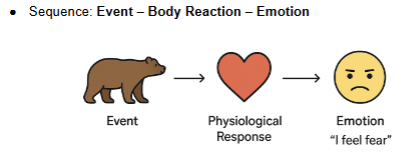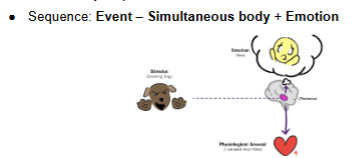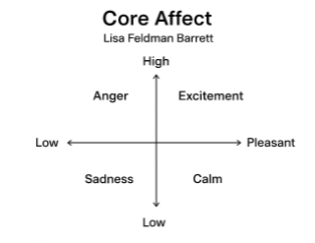Emotion and Affect
1/15
There's no tags or description
Looks like no tags are added yet.
Name | Mastery | Learn | Test | Matching | Spaced |
|---|
No study sessions yet.
16 Terms
Emotion
Brief, intense, specific
Lasts seconds or minutes
Has clear facial expressions
Ex: Fear, anger, joy
Mood
Longer, diffuse, no clear target
Lasts hours or days
Acts as a filter on your experience
Ex: Irritable, gloomy, anxious
Affect
Umbrella term for ALL feeling states
Used broadly in research
Can be positive or negative
Emotions =
Feeling + body + behavior
(I feel afraid → my heart races → i jump back and scream)
Who studied emotions and facial expressions?
Paul Ekman in 1960
Who proposed that emotions follow from bodily reactions and when?
Williams James and Carl Lange in 1884-1887

Who proposed that emotions occur simultaneously with bodily responses and when?
Walter Cannon and Philip Bard (1927-1934)

Who proposed the two factor theory and when? (context maters)
Stanley Schachter and Jerome Singer (1962)

Theory of constructed emotion
Argues emotions are not universal hardwired circuits, the brain constructs emotions using bodily sensations, past experiences, cultural concepts of emotions
Who proposed the Theory of Constructed Emotion and when?
Lisa Feldman Barrett (2006)
Circumplex Model

Hedonic treadmill
People will return to a baseline level of happiness despite major positive or negative life events (excitement/upset will wear down)
What regions display Individualistic Cultures?
U.S, Western Europe, Australia
What regions display Collectivistic Cultures?
East Asia, Latin America, African cultures
Individualistic Culture
Personal autonomy
Values self-expression and personal achievement
Individual goals prioritized over group harmony
Collectivistic Culture
Interdependence and group harmony
Value conformity to social norms and roles
Group goals prioritized over individual desires